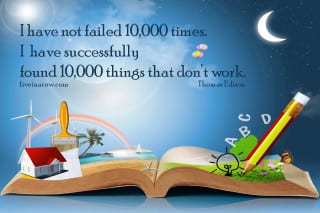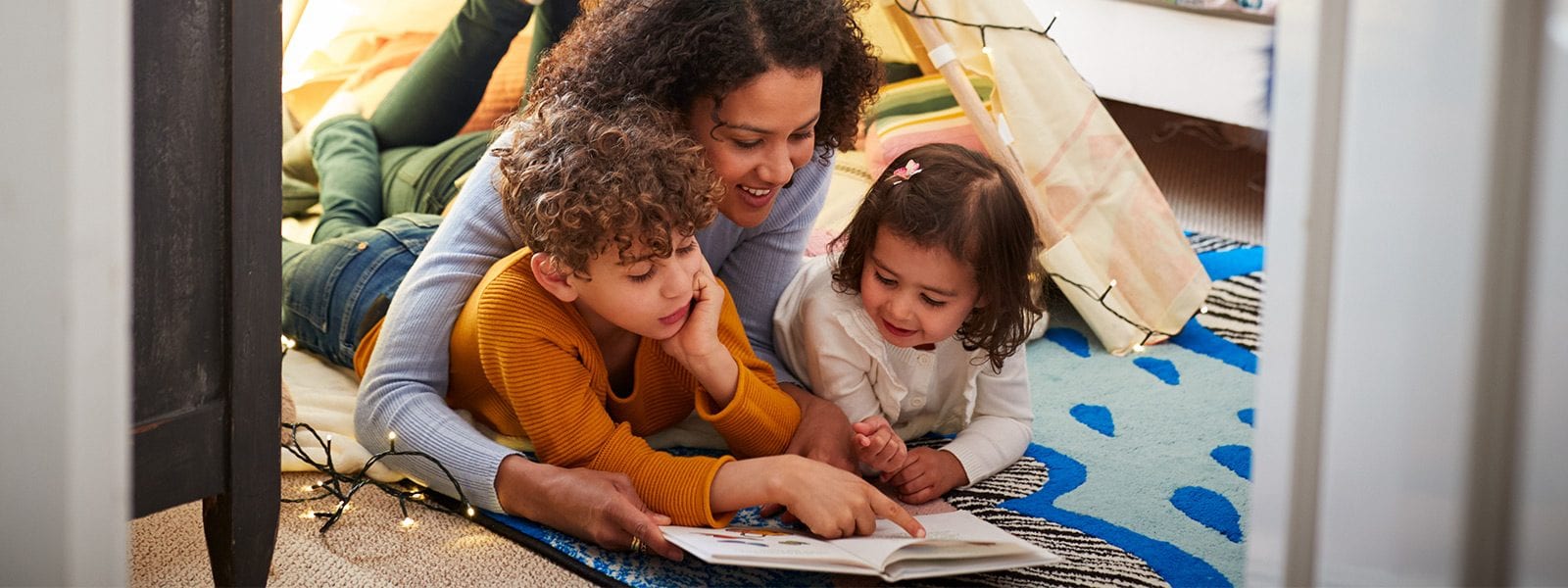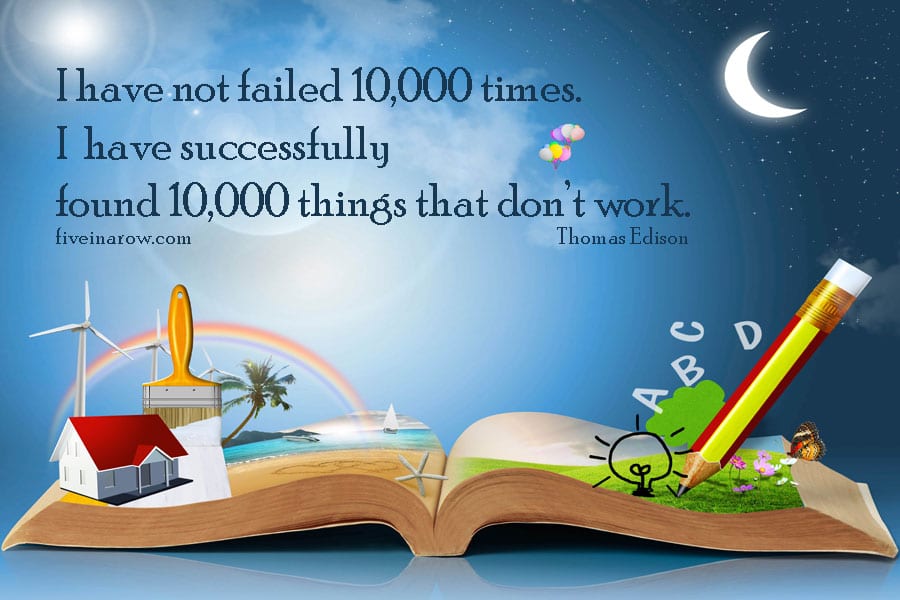I have not failed 10,000 times. I have successfully found 10,000 things that don’t work. ~ Thomas Edison
I can hear it now: “Maybe this is the year I become a perfect teacher,” many of you might be thinking or hoping, but the truth is there are no perfect teachers. As in any area of our lives, there are always aspects that can be improved. The goal is to keep trying. If a teaching method or material is working for your student (and family) keep it. If it is not, be willing to cheerfully abandon it for something else which will work better. Do however, give it a good try.
Every teacher who has ever taught goes through this process, and as homeschool teachers we have the privilege of doing so as well. It will certainly help keep a joy in our journey if we begin to think like Edison, that we are successfully finding the things that don’t work as we learn the methods that do. When we conquer the fear that we will fail, then we can become brave enough to find out what methods bring genuine learning to our children and become confident enough to employ these methods, even when they are not the traditional classroom teaching styles. Remember, homeschooling is not schooling-at-home.
 So what constitutes genuine learning? Why is it important to find the right methods for our students and create an atmosphere that keeps the excitement of learning a major goal?
So what constitutes genuine learning? Why is it important to find the right methods for our students and create an atmosphere that keeps the excitement of learning a major goal?
I offer for your consideration that real learning goes far beyond the minutia of billions of trivial memorized facts and delves deeply into the practices of thinking, pondering, evaluating, and seeking knowledge, wisdom and truth. Genuine learning includes discovering what you think and believe, conversing about it and learning how to ask pertinent questions. Good questions are what got Thomas Edison in trouble at school and allowed him the privilege of schooling at home where he could ask all the questions he wanted and have time to find the answers!
Certainly there is a place to learn math facts, to memorize some history dates, and to be able to recite a poem or portion of a play. Yet if the “learning” stops at simply fact memorization then I question whether learning has actually occurred. Where are the thinkers, the ponderers, those who look at the world and wonder how things work and why people have acted the way they have throughout history? Where are those who can read a book, poem, play or see a film and first of all take it in as a whole discovering any truth it might contain, and then ponder the “agenda” of the originator or producer.
What is the work trying to say to me?
Amidst all the characters, scenery and action, what is the main message of this book, play, etc.
Do I agree or disagree with that message?
Why?
Now, most adults find this kind of questioning intimidating themselves. I suggest that we, as adults, need to work at becoming better thinkers. Yet, how much more is it becoming important to teach these the skills of thinking to our children. They are not likely to pick them up anywhere else! In fact, I just read a book on children’s activities, published in the early 1950’s. The book stated in a most matter-of-fact manner that conversations where the teacher does most of the talking, or ones in which the children simply parrot what they think the teacher wants them to say, do not develop the mind and ideas of the children involved. The book went on to say that trying to coax children into good conversations takes a bit of work, and sometimes groups of children will have a hard time freely speaking their thoughts if they have come from a formal public school setting where children’s ideas are not encouraged. I read that and thought, “Wow! Even in 1950, schooling was facts without thinking!”
So, maybe this year we can gently and slowly began to incorporate some of this type of genuine thinking and learning into our teaching day. As we cover a subject, even with the young ones, we can begin to ask simple questions to get them thinking. We can also listen carefully to their questions and help them reason out information for themselves. But, remember! Our goal is not to frustrate the life out of our children. Going overboard with this kind of teaching method will not produce good results. We are not trying to ask little questions of them to put them on the spot or to make them feel like they can never offer the right answer. More is not better here. Instead we need to guide them ever so gently through the facts they are memorizing and into the heart of the subject itself. Some of your questions rather than starting out, “What do you think about…” might even begin, “I was wondering how this event could have ever taken place…” or “I was thinking how could a person imagine an invention like this one…every now and then I think of something I wish could be invented…” or “I was wondering why we are studying a subject like tree leaves (or bees, clouds, etc.)?” When asked this way, your students may be more willing to respond with their own ideas. I mean if you are having a bit of trouble thinking out something, maybe they’ll feel they can be of help! At least you can ponder the topic together.
As most of us being this year, consider making a habit of not limiting the focus of your teaching to just learning a mountain of facts, but that you would try guiding your students through the facts into the very heart of the subjects you are studying!




 Introducing the Five in a Row Notebook Builder!
Introducing the Five in a Row Notebook Builder!
We are off to a great start here! Thank you for your encouragement!